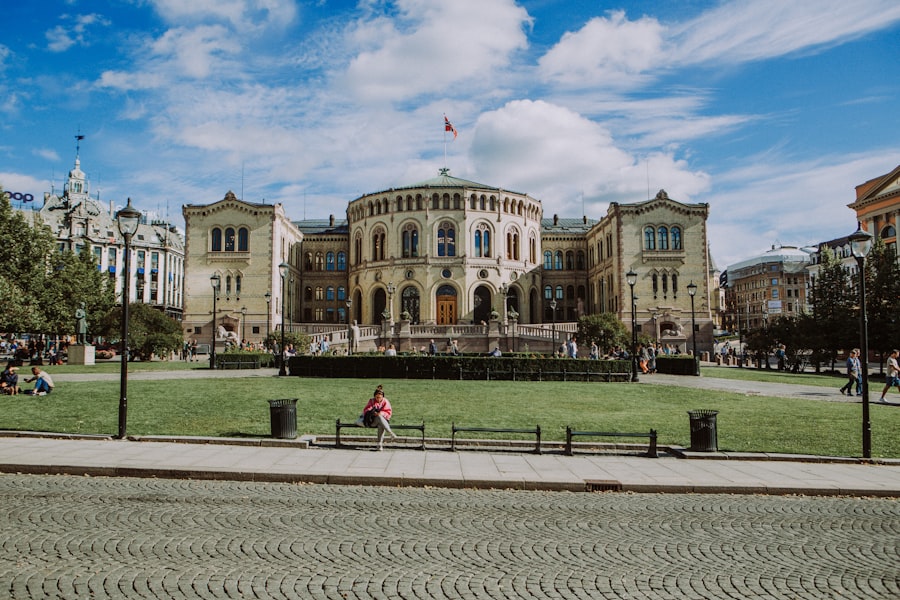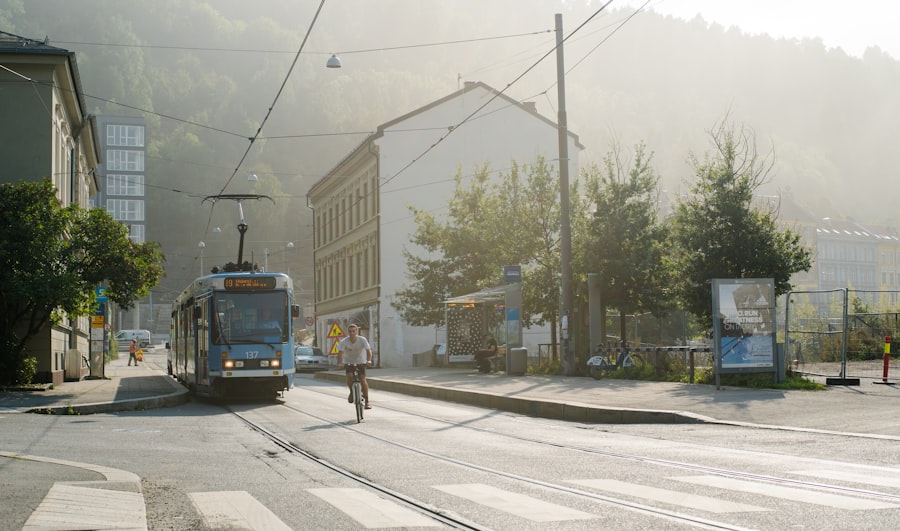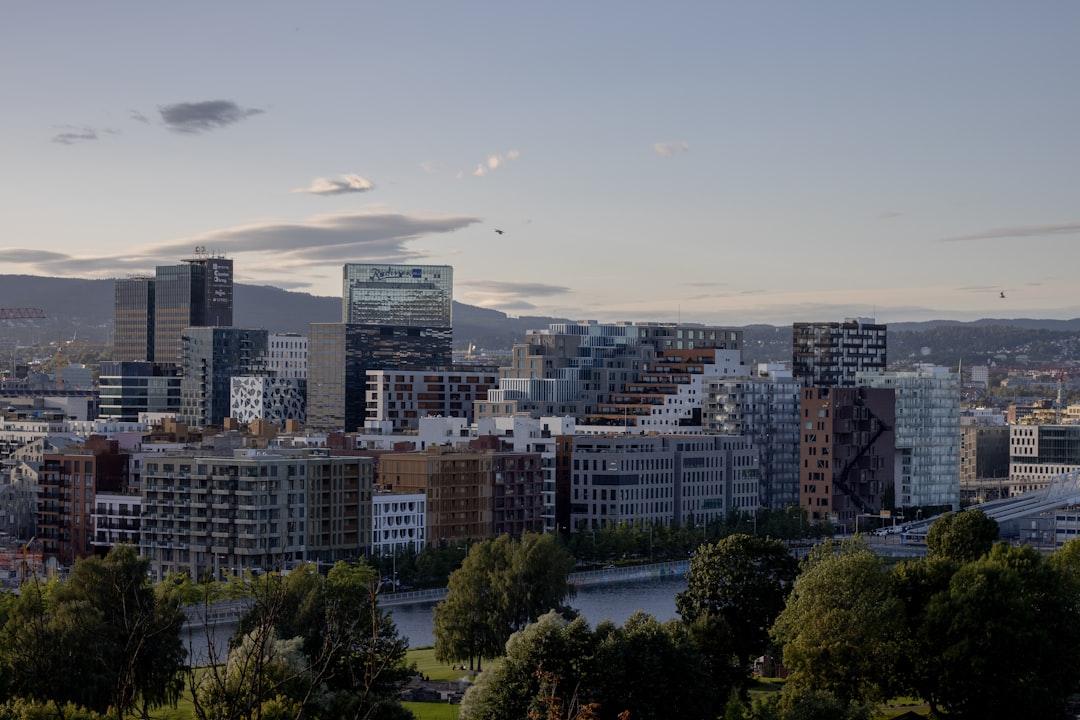The Northern Lights, or Aurora Borealis, are one of nature’s most spectacular phenomena, captivating the hearts and minds of those fortunate enough to witness them. In Norway, the ethereal dance of vibrant greens, purples, and pinks across the night sky has become a significant draw for tourists and locals alike. This breathtaking display is not merely a visual feast; it is steeped in cultural significance and scientific intrigue.
The allure of the Northern Lights has inspired countless myths and legends, making them an integral part of Norway’s rich heritage. Norway’s unique geographical position, lying within the Arctic Circle, provides an ideal vantage point for observing this celestial spectacle. The combination of clear, dark skies and minimal light pollution in many regions makes Norway one of the best places in the world to experience the Northern Lights.
As winter descends upon the land, the long nights create perfect conditions for this natural light show, drawing visitors from around the globe to witness the magic that unfolds above. Take the first step. Book a consultation with the Norway Relocation Group for your move to Norway. https://norwayrelocation.no/one-hour-strategy-session/
Summary
- The Northern Lights, also known as Aurora Borealis, are a natural light display in the Earth’s sky, predominantly seen in the high-latitude regions around the Arctic and Antarctic.
- The best places to see the Northern Lights in Norway include Tromsø, Lofoten Islands, and Finnmark due to their clear skies and minimal light pollution.
- The best time to see the Northern Lights in Norway is from late September to late March, with peak activity around the equinoxes in September and March.
- The science behind the Northern Lights involves solar wind, Earth’s magnetic field, and collisions between charged particles in the atmosphere.
- To photograph the Northern Lights in Norway, use a tripod, a wide-angle lens, and a remote shutter release for long exposures.
- Northern Lights tours and excursions in Norway offer guided experiences with knowledgeable local experts to maximize your chances of seeing the Aurora.
- When packing for a Northern Lights trip in Norway, remember to bring warm clothing, including thermal layers, waterproof outerwear, and sturdy footwear.
- Accommodation options for Northern Lights viewing in Norway range from cozy cabins and traditional Sami tents to luxury hotels with panoramic views.
- Alternative activities to enjoy during the day in Norway include dog sledding, snowmobiling, and visiting local museums and cultural sites.
- When viewing the Northern Lights in Norway, remember to respect the environment by minimizing light pollution and following local guidelines for responsible tourism.
- Tips for maximizing your chances of seeing the Northern Lights in Norway include checking the weather forecast, staying in remote areas, and being patient and persistent.
Best Places to See the Northern Lights in Norway
When it comes to witnessing the Northern Lights in Norway, certain locations stand out as prime viewing spots. Tromsø, often referred to as the “Gateway to the Arctic,” is one of the most popular destinations for aurora enthusiasts. Nestled between fjords and mountains, Tromsø offers a stunning backdrop for the lights, along with a vibrant city atmosphere.
The surrounding wilderness provides ample opportunities for excursions into nature, where the lights can be seen in all their glory. Another remarkable location is the Lofoten Islands, known for their dramatic landscapes and picturesque fishing villages. The islands’ remote setting allows for unobstructed views of the night sky, making it an ideal spot for aurora hunting.
Additionally, the combination of rugged mountains and tranquil waters creates a stunning reflection of the lights, enhancing the overall experience. For those seeking a more off-the-beaten-path adventure, Svalbard offers a unique opportunity to see the Northern Lights in a polar environment, surrounded by glaciers and wildlife.
When to See the Northern Lights in Norway

Timing is crucial when planning a trip to see the Northern Lights in Norway. The aurora is most visible during the winter months, typically from late September to early April. During this period, the long nights provide ample darkness for optimal viewing conditions.
However, the peak months are generally considered to be December through February when the nights are longest and skies are often clearer. It is essential to keep in mind that while winter offers the best chances for sightings, weather conditions can be unpredictable. Cloud cover can obscure the lights, so it is advisable to stay flexible with your plans and be prepared to travel to different locations if necessary.
Additionally, solar activity plays a significant role in aurora visibility; therefore, checking forecasts for solar storms can enhance your chances of witnessing this breathtaking phenomenon.
Understanding the Science Behind the Northern Lights
The Northern Lights are a result of complex interactions between solar particles and Earth’s atmosphere. When charged particles emitted by the sun collide with gases in our atmosphere—primarily oxygen and nitrogen—they create bursts of light that manifest as the stunning colours we see in the night sky. The altitude at which these collisions occur can influence the colours observed; for instance, oxygen at higher altitudes can produce red hues, while lower altitudes often yield greens.
This scientific explanation adds an extra layer of appreciation for those who witness the aurora. Understanding that these lights are not merely random but rather a beautiful consequence of cosmic activity can deepen one’s connection to this natural wonder. Moreover, ongoing research into solar activity and its effects on Earth continues to unveil new insights into this captivating phenomenon.
How to Photograph the Northern Lights in Norway
Capturing the Northern Lights on camera can be a rewarding yet challenging endeavour. To achieve stunning photographs, it is essential to understand some basic photography principles. A sturdy tripod is crucial for stabilising your camera during long exposure times, which are necessary to capture the faint light of the aurora.
Additionally, using a wide-angle lens will allow you to encompass more of the sky in your shots. Settings play a vital role in achieving great results as well. A low ISO setting will help reduce noise in your images while allowing for longer exposure times.
Experimenting with different shutter speeds can also yield varied results; longer exposures will capture more light but may result in motion blur if the aurora is particularly active. Lastly, patience is key—waiting for the right moment when the lights are at their most vibrant can make all the difference in your photographs.
Northern Lights Tours and Excursions in Norway

For those who prefer a guided experience, numerous tours and excursions are available throughout Norway that cater specifically to Northern Lights enthusiasts. These tours often include transportation to prime viewing locations away from city lights, increasing your chances of witnessing this natural wonder. Many operators also provide knowledgeable guides who can share insights about the science behind the aurora and local folklore associated with it.
In addition to traditional bus tours, there are also unique options such as dog sledding or snowmobiling excursions that combine adventure with aurora viewing. These experiences not only offer an adrenaline rush but also allow you to immerse yourself in Norway’s stunning winter landscapes while searching for the elusive lights. Whether you choose a simple tour or an adventurous outing, joining a guided experience can enhance your chances of seeing the Northern Lights while providing valuable context about this extraordinary phenomenon.
What to Wear and Pack for a Northern Lights Trip in Norway
Preparing for a trip to see the Northern Lights requires careful consideration of clothing and gear due to Norway’s cold winter temperatures. Layering is essential; start with a moisture-wicking base layer to keep sweat away from your skin, followed by insulating layers such as fleece or wool for warmth. A waterproof and windproof outer layer will protect you from harsh weather conditions while allowing you to enjoy your time outdoors comfortably.
In addition to clothing, packing essential accessories is crucial for staying warm during long nights spent outside waiting for the aurora. A good pair of thermal gloves will keep your hands warm while allowing you to operate your camera easily. A warm hat or beanie is also vital since a significant amount of body heat escapes through your head.
Don’t forget sturdy waterproof boots with good insulation; they will keep your feet warm and dry as you traverse snowy landscapes.
Accommodation Options for Northern Lights Viewing in Norway
When planning your Northern Lights adventure in Norway, selecting suitable accommodation can significantly enhance your experience. Many hotels and lodges are strategically located in areas with minimal light pollution, providing excellent opportunities for aurora viewing right from your doorstep. Some establishments even offer wake-up calls when the lights appear, ensuring you won’t miss out on this breathtaking spectacle.
For those seeking a more immersive experience, consider staying in traditional Norwegian cabins or “hytter” located in remote areas. These cosy lodgings often come equipped with large windows or outdoor decks that allow for unobstructed views of the night sky. Additionally, some hotels offer unique amenities such as outdoor hot tubs or saunas where you can relax while keeping an eye on the heavens above.
Alternative Activities to Enjoy During the Day in Norway
While waiting for nightfall to witness the Northern Lights, there are plenty of alternative activities to enjoy during daylight hours in Norway’s winter wonderland. Dog sledding is a popular choice that allows you to explore stunning landscapes while being pulled by a team of enthusiastic huskies. This exhilarating experience not only offers breathtaking views but also provides insight into traditional Norwegian culture.
Another fantastic daytime activity is snowshoeing or cross-country skiing through Norway’s pristine wilderness. Many trails are accessible near popular aurora viewing locations, allowing you to immerse yourself in nature while staying active. For those interested in local culture, visiting museums or historical sites can provide valuable context about Norway’s rich heritage and its connection to the Arctic environment.
Northern Lights Etiquette and Respect for the Environment
As with any natural phenomenon, it is essential to approach Northern Lights viewing with respect for both nature and fellow observers. When venturing into remote areas for aurora viewing, ensure that you leave no trace behind—this includes taking all rubbish with you and avoiding disturbing wildlife habitats. Staying on marked paths helps preserve delicate ecosystems while ensuring your safety.
Additionally, being considerate towards other viewers is crucial; avoid using bright lights or flash photography that could disrupt others’ experiences. If you’re part of a group tour, follow your guide’s instructions regarding noise levels and movement during peak viewing times. By practising good etiquette and respect for nature, everyone can enjoy this extraordinary spectacle without compromising its beauty.
Tips for Maximizing Your Chances of Seeing the Northern Lights in Norway
To maximise your chances of witnessing the Northern Lights during your trip to Norway, consider several practical tips that can enhance your experience. First and foremost, stay informed about aurora forecasts and local weather conditions; various apps and websites provide real-time updates on solar activity and cloud cover that can help you plan your outings effectively. Flexibility is key when it comes to aurora hunting; be prepared to change locations based on weather conditions or solar activity reports.
Sometimes driving just a short distance away from urban areas can significantly improve visibility due to reduced light pollution. Lastly, patience is essential—while waiting for nature’s show may require time spent outdoors in cold temperatures, it often leads to unforgettable moments under a starry sky filled with dancing lights. In conclusion, witnessing the Northern Lights in Norway is an experience like no other—a blend of natural beauty, cultural significance, and scientific wonderment that leaves an indelible mark on all who behold it.
For those looking to immerse themselves further into Norwegian culture while learning the language during their stay, consider enrolling in courses at NLS Norwegian Language School in Oslo. With expert instructors and tailored programmes designed for all levels, NLS offers an excellent opportunity not only to enhance your language skills but also to deepen your understanding of Norway’s rich heritage as you embark on this unforgettable journey under the auroras’ enchanting glow.
Learn more about the Norwegian classes at the NLS Norwegian Language School in Oslo

